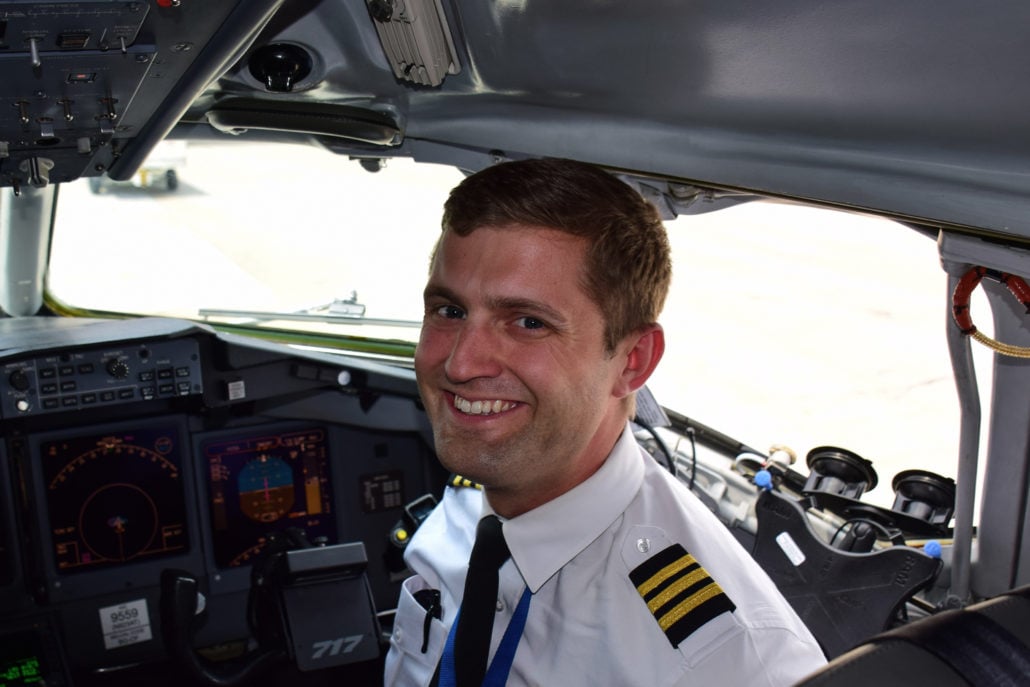
In our Ask a Pilot series, pilot Spencer Marker answers one of your aviation-related questions each week. See past installments here and submit your own to Whitney@johnnyjet.com.
The question
Just how much hands-on flying do pilots do?
—Dan M.
The answer
Hey Dan! Thanks for the great question. For many, becoming a pilot is a lifelong dream. Most of us dreamed of a time where we would get to place our hands on the controls of a jet and guide it expertly through the sky. That is the very notion I had when I decided to set my heart on aviation at the young age of eight-years old. Now that I have achieved my dream, the realty of guiding an airplane through the sky is slightly different than what I had dreamt. Instead of me constantly controlling the airplane, there are now scores of tools at my disposal to navigate through the skies. Most notable of those is the autopilot. I touched on the finer details of the autopilot here.
To answer your question in the most direct way possible, Dan, the amount of hand-flying a pilot does varies. And I’ll explain why.
The autopilot
The autopilot was designed to be a tool at the pilot’s disposal to decrease workload during less busy moments during the flight. Namely, in cruise flight when the airplane is holding a constant altitude and heading. In fact, early autopilots would merely control the pitch (up and down) of the airplane and the roll (left and right).
Modern autopilots will work alongside the airplane’s centralized flight computer and guide the aircraft along its entire route. Most modern commercial airplanes flying today use this type of automation.
When do pilots hand-fly?
In spite of all this extra help, there are things the pilots must do. Namely: takeoff. The autopilot can’t control the airplane down the runway during departure. And while many airplanes can land themselves in bad weather, pilots are still required to hand fly in several instances, as some approaches we use lack the precision necessary to guide the airplane all the way to the runway.
Airlines too leave it to the discretion of the pilot to choose to hand-fly when the conditions permit. This is generally when other ancillary tasks have been completed, the weather is acceptable and the pilot flying (can be Captain or First Officer) feels it is prudent to do so. If the weather is bad or the visibility is reduced, pilots will allow the autopilot to guide the aircraft on approach, as the workload is significantly higher.
Personally, I hand-fly in most instances up to 10,000ft on departure and disconnect the autopilot about five miles from the runway when the weather is good. This way I keep my feel for the airplane and get to enjoy one of my favorite parts of my job: simply flying. But truthfully, most pilots spend 10 minutes or less manually controlling the path of their airplane.
Automation complacency
As airplane technology has improved, the FAA and air carriers have discovered a trend of over-reliance on aircraft automation. Essentially, pilots are becoming too reliant on their autopilots, and this reliance is eroding stick-and-rudder skills.
To combat this, a good amount of time in pilot training is spent familiarizing ourselves with manual control of the airplane, without any help from the onboard automation. Time is spent in simulators conducting visual approaches and landing without assistance from the flight computer, autopilot or autothrottles (computers that automatically control engine thrust based on what the pilot requests).
Airlines also request pilots hand-fly in day-to-day operations when conditions permit. This reinforces traits learned in the simulator and allows for a level of comfort in all operating situations, whether the autopilot is on or not.
To sum up
Thanks again for the great question, Dan. Every pilot dreams of taking control of their very own jet aircraft and guiding it through the skies. However, as commercial pilots, our jobs are tasked with more than simply flying the airplane. During every single flight, there is a multitude of other tasks that must be completed and require your crew’s attention. During these times, the autopilot is an invaluable tool in workload management.
Thanks for the question! And if anyone has a burning aviation question or something you would like cleared up, drop us a line at Whitney@johnnyjet.com to get your question featured in an upcoming Ask a Pilot column.
Tailwinds,
—Spencer



